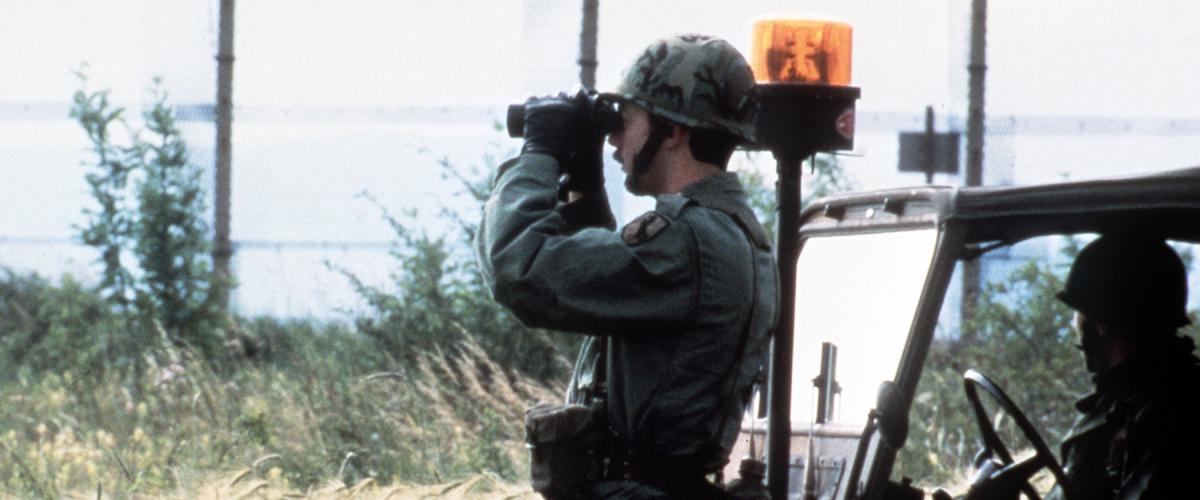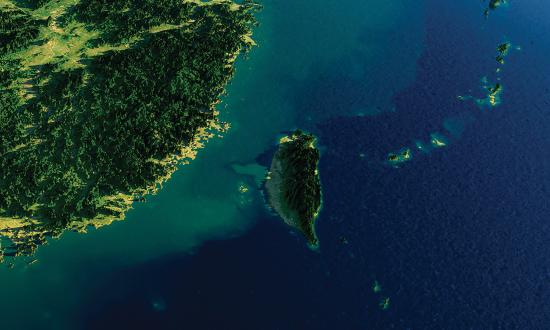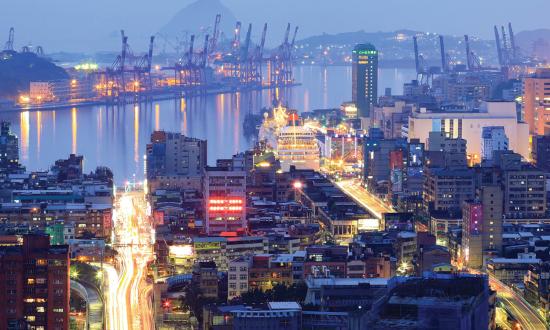At midnight on 12 August 1961, East Germany closed the border between East and West Berlin. The status quo established by the 1945 Potsdam Agreement, in which Allied forces enjoyed freedom of movement in Berlin, had become unbearable to Moscow and its satellite government in East Germany.
For too long the socialist East had hemorrhaged prestige and vitality as its talented youth traveled to Berlin and conveniently slipped across the border to the Western partitions, escaping the Soviet Union’s clutches and fundamentally undermining its pet myth of socialist paradise. Soviet Premier Nikita Khrushchev precipitated the Berlin Crisis with a forceful ultimatum to the United States, Britain, and France: make a separate peace with East Germany and terminate dated Allied agreements to share control of Berlin. Doing so would have permitted the East to snuff out the carefully maintained democracy in West Berlin.
The Kennedy administration did not blink. The U.S. Army occupied West Berlin from July 1945 to September 1994, steadfast through the Berlin Airlift, the Checkpoint Charlie Crisis, and Able Archer 83 debacle. The 10,000-strong Western force in West Berlin lacked raw power relative to the Soviet forces surrounding the city, which at one point numbered more than 400,000. However, the mere presence of U.S. soldiers was a powerful deterrent. That a Soviet determination to overrun Berlin would result in deaths of Americans stationed there lent the quality of credibility to U.S. promises to protect West Berlin.
A Modern Strategy
Today, more than 30 years since the collapse of the Soviet Union, two other authoritarian states are plotting to overrun democratic neighbors they believe to be theirs. During China’s National Party Congress in 2022, President Xi Jinping reiterated that while China seeks a peaceful reunification, he nevertheless reserves the right to employ violence. At the same time, U.S. Secretary of State Anthony Blinken reported that China had decided to pursue a “much faster timeline” toward reunification. And, of course, Moscow’s revanchist imperialism boiled over last year.
While the West has responded with firmness and solidarity to Russian violence in Ukraine, an anticipated Chinese invasion of Taiwan is a far murkier situation. On one hand, Taiwanese preparation, greater integration between the militaries of “The Quad,” and reorientation of the U.S. Marine Corps and Navy toward warfare in the Pacific have denied China the assured local superiority required to confidently invade Taiwan. However, doubts persist as to the West’s course of action should the invasion occur. President Joseph Biden’s remarks that the United States would defend Taiwan in the event of an invasion have been consistently walked back by the White House. Presidential candidates have rightfully questioned whether direct confrontation with China is worth the risk of nuclear escalation. And, despite the best efforts of the government to unravel supply chains, Sino-American economic entanglement remains strikingly deep. The strategy of U.S. diplomats to leave the United States’ response to a cross-strait invasion uncertain, known as strategic ambiguity, functions best when Chinese decision-makers prioritize economic engagement with the West over reunification—an assumption that grows weaker by the day. A new strategy is needed.
When the Soviet Union took steps to erode the Potsdam Agreement, the United States acted boldly and placed American lives between the citizens of West Germany and Soviet bayonets. Similarly, the United States should place a “Berlin Brigade” in Taipei as China tests the limits of strategic ambiguity. Rather than first invade Taiwan, and then leave the United States to decide whether and to what degree to react, a Berlin Brigade in Taiwan places the onus fully on China’s shoulders to decide whether to initiate a full-scale war, as the U.S. response becomes credibly tied to American lives on the island. A Taipei Tripwire would eliminate the possibility that the Chinese could blunt the international response to an invasion of Taiwan.
Cautious observers would be critical of such a sudden move, and they may be right. The Taipei Tripwire runs the risk of immediate escalation with a nuclear-armed adversary and binds the United States to a war should China decide to invade. However, history teaches that those risks pale in comparison to those of inaction.
The geopolitical and military dimensions of the Russia-Ukraine and China-Taiwan situations can be endlessly contrasted. Regardless, four popular theories of why Russia invaded Ukraine can be used to estimate the impact of the Taipei Tripwire on the likelihood of a Chinese cross-strait invasion. Those four theories are the face value, madman, unacceptable alternative, and reactionary theories.
Face Value
The first theory takes the Russian invasion of Ukraine at face value. Because Moscow has a longstanding policy to reclaim historically Russian territory lost during the breakup of the Soviet Union, then Russia will predictably pursue this goal. As war is an extension of policy, Russian policy makers coolly and rationally determined that an invasion was the best path forward.
In a face value world, the key to preventing an invasion is to persuade Chinese policymakers that war is the costliest of their arrayed options. Peace will be maintained in the Far East so long as a rational cost-benefit analysis of invasion against alternative means of reunification always favors the latter.
While the Chinese psychological, diplomatic, economic, or gray zone operations against the Taiwanese warrant their own response, it is vital to stymie the military option first and foremost, lest an invasion become the optimal strategy for Chinese policymakers to achieve their goal. In the face-value construct, a Taipei Tripwire promotes peace because it would raise the likelihood that the maximum cost possible—a global war—would be imposed should China invade, all the while not altering the cost or probable success of other means of reunification.
Madman Theory
The madman theory posits that the invasion is best explained by the paranoid megalomania of President Vladimir Putin. Adherents of the madman theory argue that war occurs because one fallible and emotional human being calculates (or miscalculates) that a war would benefit themselves, their allies, or their country. Madmen are not primarily concerned with the political goals the war purports to serve. Rather, they see the war as a vehicle to consolidate power, rally their people, or eliminate rivals.
To avoid war in this construct, one must reduce the likelihood the madman underestimates or miscalculates the cost of war. The Taipei Tripwire does so by clearly communicating the high likelihood the full possible cost of war will be brought to bear against the aggressor. Thus, the tripwire shrinks the likelihood of war in the madman construct by reducing the uncertainty with which the madman copes while calculating the probable cost of war.
Unacceptable Alternative
The unacceptable alternative theory states that Ukraine was invaded, and Taiwan might be invaded, because a distinct society composed of an ethnically similar people that is reasonably free and reasonably prosperous is wholly intolerable to the current regimes in Russia and China. A democratic sister state necessarily undermines the social contract Putin and China’s leaders have written with their people and exposes the illogic of their rule. In this existential threat construct, China must pursue reunification because Taiwan’s independence itself threatens China’s legitimacy.
Here, as in the face-value construct, the key to avoiding war is preventing war from ever becoming the most favorable route to achieving China’s goals. The Taipei Tripwire would do so by massively increasing the likelihood that military action would result in catastrophic war, while not altering the cost-profile of psychological, diplomatic, economic, or gray zone operations.
Reactionary
Finally, some scholars argue that Russia’s invasion of Ukraine is a logical reaction to Western aggression. Under this explanation, NATO’s eastward march following the dissolution of the Soviet Union was perceived as an existential threat by Russia, which acted to protect its own sovereignty and way of life. At first glance, the creation of a Taipei Tripwire force under the reactionary theory would aggravate the likelihood of war. However, like the Berlin Brigade, a Taipei Tripwire would not actually represent much of a material escalation. In Berlin, 10,000 U.S. soldiers surrounded by 400,000 of the Red Army’s finest did nothing to seriously alter the balance of power in the region. Similarly, a Marine infantry battalion in Taipei is unlikely to put mainland China at risk. A tripwire force would increase the likelihood that the overall balance of power in the region is in fact relevant if the People’s Liberation Army (PLA) embarks on a military misadventure, while not affecting the balance itself.
Concerns that the creation of a tripwire force might nonetheless be perceived as a material escalation are still relevant and must be addressed. Fortunately, the current geopolitical situation provides a unique opportunity to establish a Taipei Tripwire at minimal risk of escalation. To begin, several dozen Marines are already stationed at the American Institute in Taiwan in Taipei (the United States does not maintain an embassy in Taiwan), and small Marine units occasionally rotate through the area to train with Taiwanese forces. By framing the emplacement of the tripwire force as an enlargement of an existing garrison, the U.S. could change the status quo without engaging in novel behavior.
Furthermore, the tripwire force could be established in conjunction with another de-escalatory measure. Perhaps the United States could proportionally reduce the size of the garrison in Okinawa, and simply move Marines from there to Taiwan. The United States could remove a naval asset from the theater at the same time the tripwire is laid. Or, in a radical move that would expose the illogic of China’s reunification ambitions and simultaneously call out China’s covert activity on another island, the United States could invite China to formalize its garrison in Cuba at the time it enlarges its garrison in Taipei.
Last, the tripwire could come as a firm response to Chinese escalatory behavior. Reacting proportionally and escalating a situation are often distinguishable only in hindsight, but worst of all is refusing to navigate the fine line between the two. As the PLA continues to push the envelope in the South China Sea, the United States must risk escalation by attempting to respond appropriately. Otherwise, the PLA’s antagonistic behavior will become the norm and the United States will find itself on a slippery slope with any response whatsoever to Chinese military activity appearing escalatory. In addition, once in existence, the tripwire force could be drawn up or down in accordance with Chinese behavior in the region.
Looking Forward
The 500,000 killed and wounded in Ukraine is a reminder of the value of the creative diplomacy that kept totalitarianism at bay in Berlin for four decades. As East European countries face the possibility of invasion for the first time in more than 30 years, the need for a new strategy is apparent. While the characteristics between Berlin in the early 1960s and Taiwan today are distinct, there are enough commonalities from which to draw to help solve Taiwan’s current predicament. The United States should break with the decaying policy of strategic ambiguity and emplace a Taipei Tripwire. Doing so could be done with minimal risk of escalation and reduce the likelihood of a Chinese invasion of Taiwan. The moral imperative of resolute statesmanship is as clear as it has ever been.






